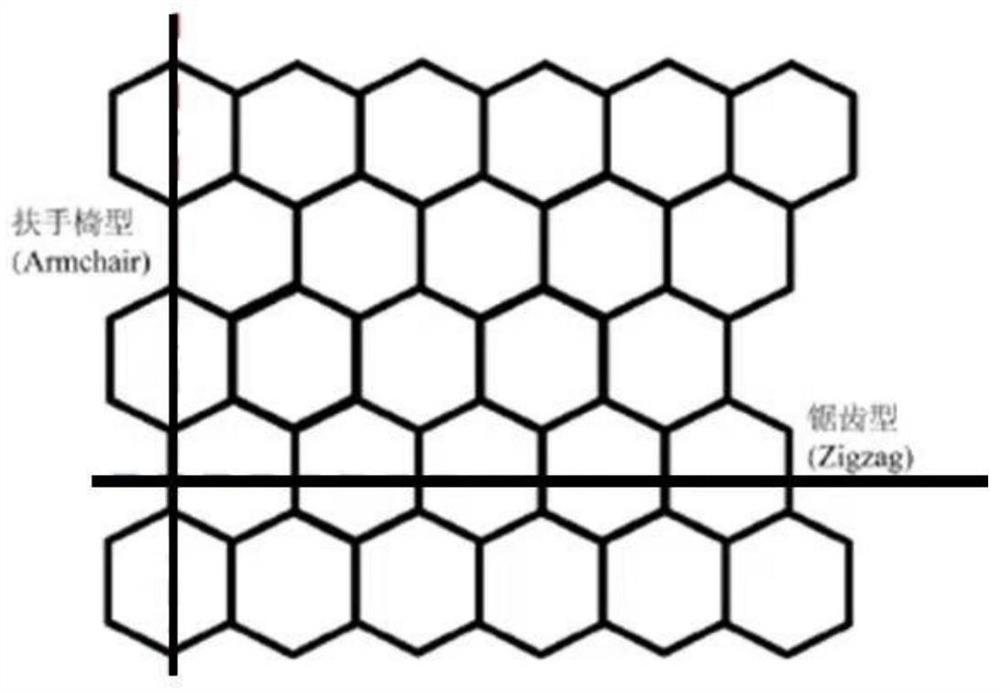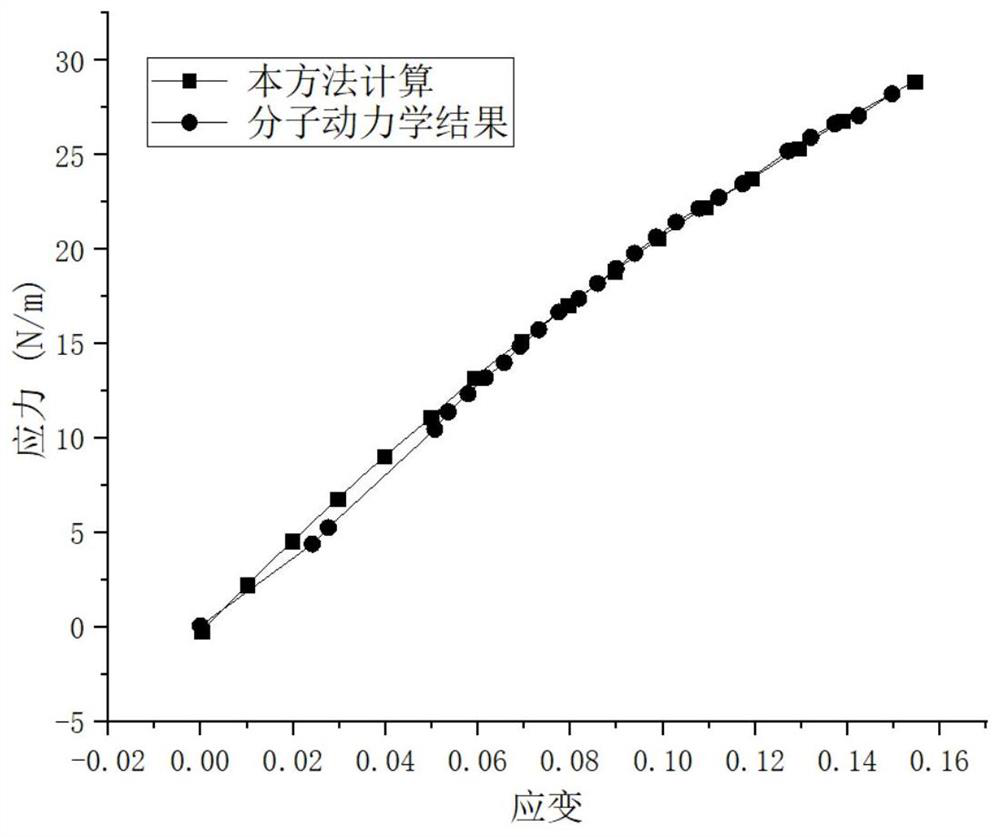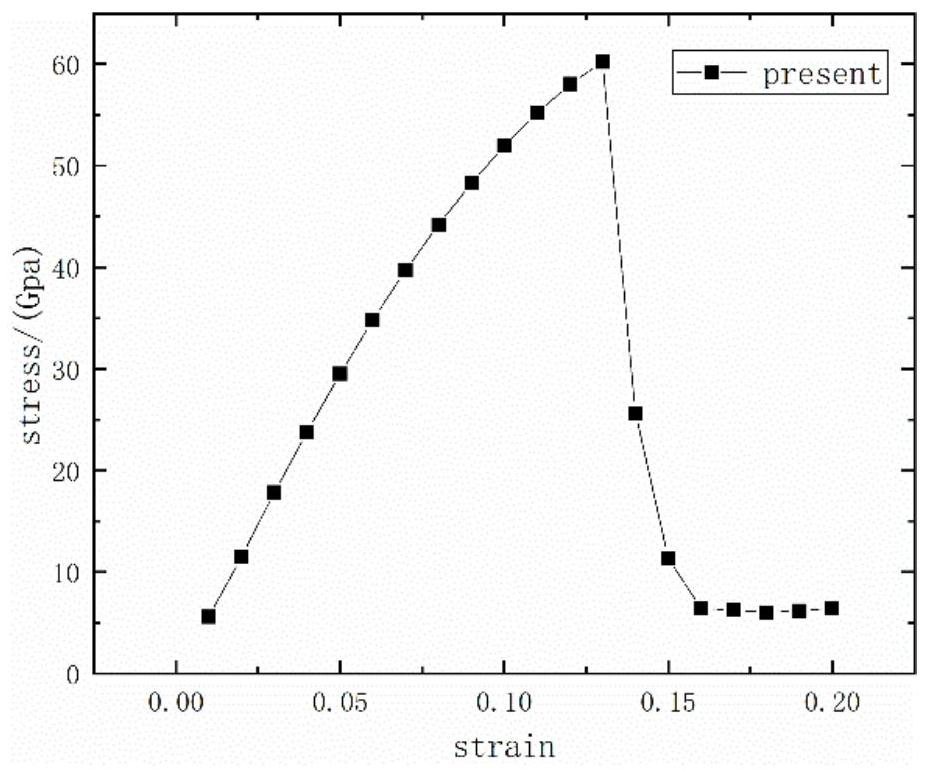Method for solving critical strain of graphene
A critical strain, graphene technology, applied in the field of graphene critical strain solution, can solve problems such as a large number of computing resources
- Summary
- Abstract
- Description
- Claims
- Application Information
AI Technical Summary
Problems solved by technology
Method used
Image
Examples
Embodiment 1
[0021] In this embodiment, what is introduced is the potential function Tersoff-Brenner potential function that we adopt, and this potential function is widely used in the calculation of the interatomic potential of graphene and single-walled carbon nanotubes:
[0022] V ij =V R (r ij )-B ij V A (r ij ) (1)
[0023] In the formula, subscript i, j represent atom, r ij Indicates the distance between two atoms, B ij Represents the key number item; V R Represents the repulsive force term between atoms, V A Indicates the attractive force term for interactions between atoms. They can be calculated by the following formula:
[0024]
[0025]
[0026] f ij (r) is a smooth cut-off function that limits the potential energy, determined by Equation 4:
[0027]
[0028] Among them, the healthy sequence function B ij Indicates the influence of atom k on the bond energy between atoms i and j under consideration of the many-body interaction:
[0029] B ij =(b ij +b j...
Embodiment 2
[0070] Please refer to Figure 1 to Figure 5 , Figure 1 to Figure 5 The relationship of this method to the mechanical properties of graphene with the strain after loading is provided.
[0071] in, Figure 4 The embodiment of the present invention provides a schematic diagram of the relationship between Poisson's ratio and strain of graphene stretched along the Armchair direction, in Figure 4 It can be seen that the graphene has broken when the slope k=0.
[0072] in, Figure 5 Provide the schematic diagram of the graphene biaxial tension failure boundary for the example of the present invention, in Figure 5 The closed area enclosed by the middle graph and the two axes of x-axis and y-axis is the effective area of graphene. When this area is exceeded, graphene will break.
[0073] The purpose of the present invention is to provide a new method for calculating the critical strain of graphene under load, which can calculate the critical strain and mechanical properties ...
PUM
 Login to View More
Login to View More Abstract
Description
Claims
Application Information
 Login to View More
Login to View More - R&D
- Intellectual Property
- Life Sciences
- Materials
- Tech Scout
- Unparalleled Data Quality
- Higher Quality Content
- 60% Fewer Hallucinations
Browse by: Latest US Patents, China's latest patents, Technical Efficacy Thesaurus, Application Domain, Technology Topic, Popular Technical Reports.
© 2025 PatSnap. All rights reserved.Legal|Privacy policy|Modern Slavery Act Transparency Statement|Sitemap|About US| Contact US: help@patsnap.com



